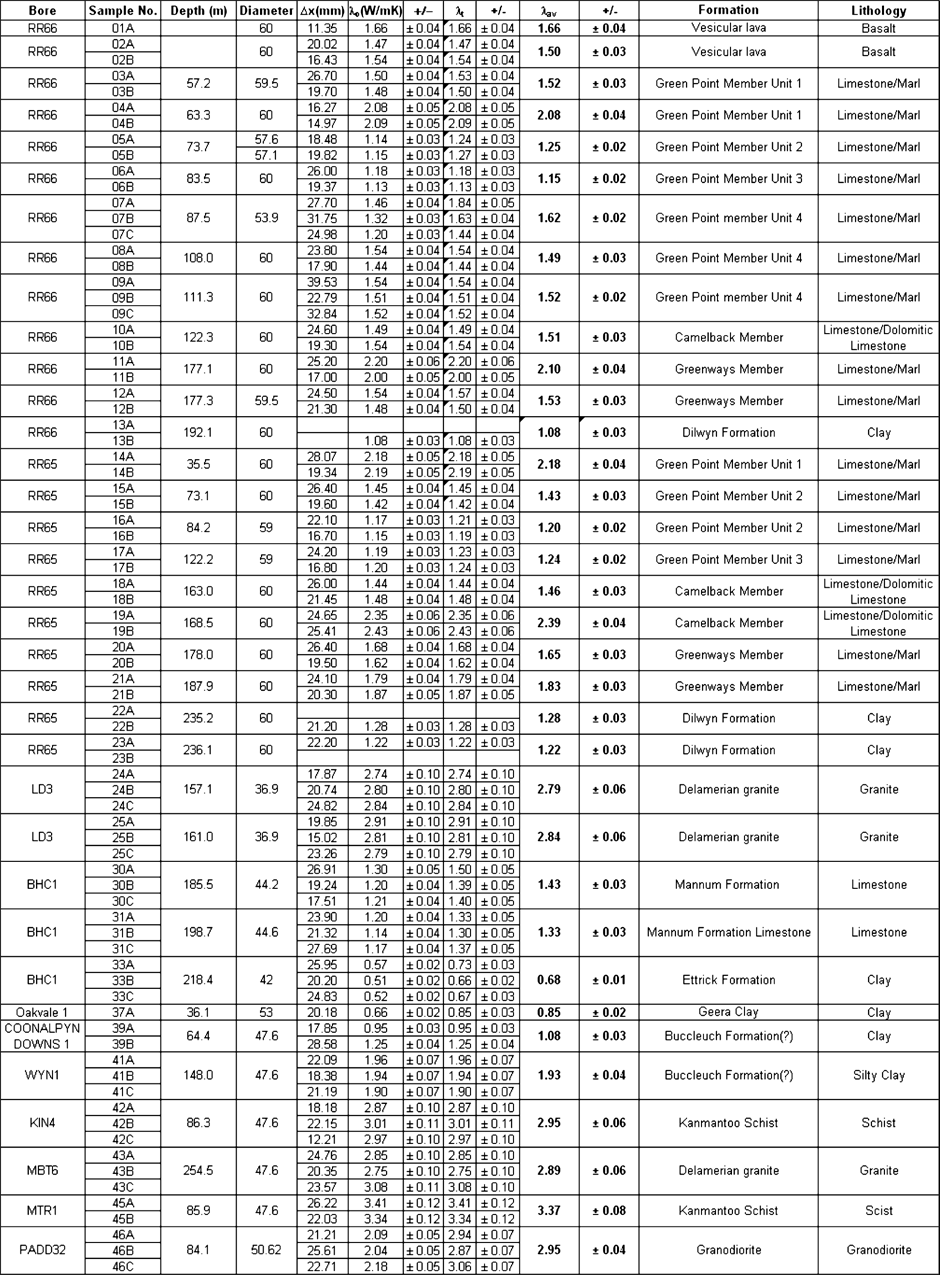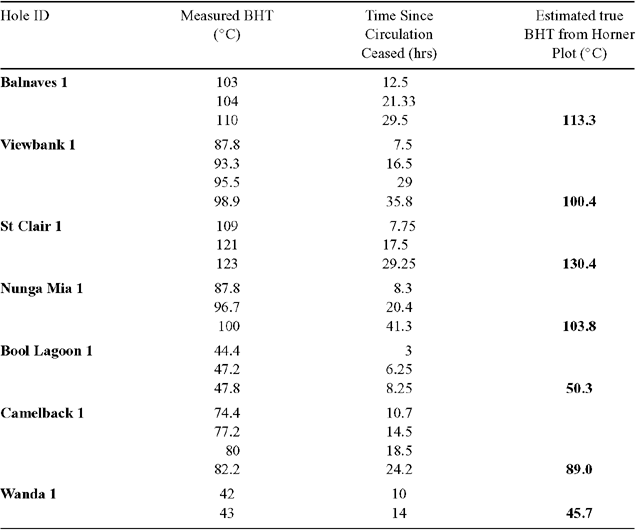New heat flow data from south-eastern South Australia *
Chris Matthews 1 3 Graeme Beardsmore 1 21 School of Geosciences, Monash University, VIC 3800, Australia.
2 Hot Dry Rocks Pty Ltd, PO Box 871, South Yarra, VIC 3141, Australia.
3 Corresponding author. Email: chris.matthews@torrensenergy.com
Exploration Geophysics 38(4) 260-269 https://doi.org/10.1071/EG07028
Submitted: 10 May 2006 Accepted: 4 October 2007 Published: 6 December 2007
Abstract
Heat flow has been measured in south-east South Australia at a spatial resolution greater than previously available. The study area contains the Southern Murray Basin, Padthaway Ridge, and Western Otway Basin. An extensive network of groundwater observation wells across the study area was used, along with several petroleum wells in the Otway Basin, to measure thermal gradients and calculate 24 new heat flow values.
Geothermal gradients were either measured directly using a cable, winch, and thermistor in cased or open holes with standing water, or by estimating average geothermal gradients from petroleum well completion temperature data. Thermal conductivity values were measured directly on existing core samples using a divided bar apparatus.
A map constructed from the measured values reveals a heat flow dataset that is non-uniform and variable over relatively short distances. Measured heat flow values range between 42 and 123 mW/m–2. In particular, a 40 km long, 15 km wide zone of elevated heat flow is identified along the northern margin of the Otway or Gambier Sub-basin that may correspond to the occurrence of Delamerian granitoids units of the Padthaway Ridge. High-resolution surface heat flow mapping provides valuable data for further research into the tectonothermal evolution of south-east Australia.
Key words: Australia, heat flow, thermal gradient, thermal conductivity, Murray Basin, Otway Basin, Delamerian Fold Belt, Padthaway Ridge, Newer Volcanics Province.
Acknowledgments
Special thanks are given to those who have helped in the data collection and analysis for this paper. In particular, Jeff Lawson and George MacKenzie are thanked for their help in accessing suitable groundwater wells. The assistance of M. Sandiford and J. Cull with their helpful insights is appreciated as well.
Cull, J. P., 1982, An appraisal of Australian heat-flow data: BMR Journal of Australian Geology and Geophysics 7, 11–21.
McBride, J. S., Lambert, D. D., Greig, A., and Nicholls, I. A., 1996, Multistage evolution of Australian subcontinental mantle; Re-Os isotopic constraints from Victorian mantle xenoliths: Geology (Boulder) 24, 631–634.
| Crossref | GoogleScholarGoogle Scholar |
Sandiford, M., Frederiksen, S., and Braun, J., 2003, The long-term thermal consequences of rifting: implications for basin reactivation: Basin Research 15, 23–43.
| Crossref | GoogleScholarGoogle Scholar |

Sheard, M. J., 1990, A guide to Quaternary volcanoes in the lower south-east of South Australia: Mines and Energy Review – South Australia 157, 40–50.

Turner, S. P., Foden, J. D., and Morrison, R., 1992, Derivation of A-type magma by fractionation of basaltic magma and an example from the Padthaway Ridge, South Australia: Lithos 28, 151–179.
| Crossref | GoogleScholarGoogle Scholar |

* Presented at the Australian Earth Science Convention, July 2006.
Appendix
Detailed tables of thermal conductivity sampling and the raw data used in Horner Plot corrections to estimate bottom hole temperatures.

|

|

